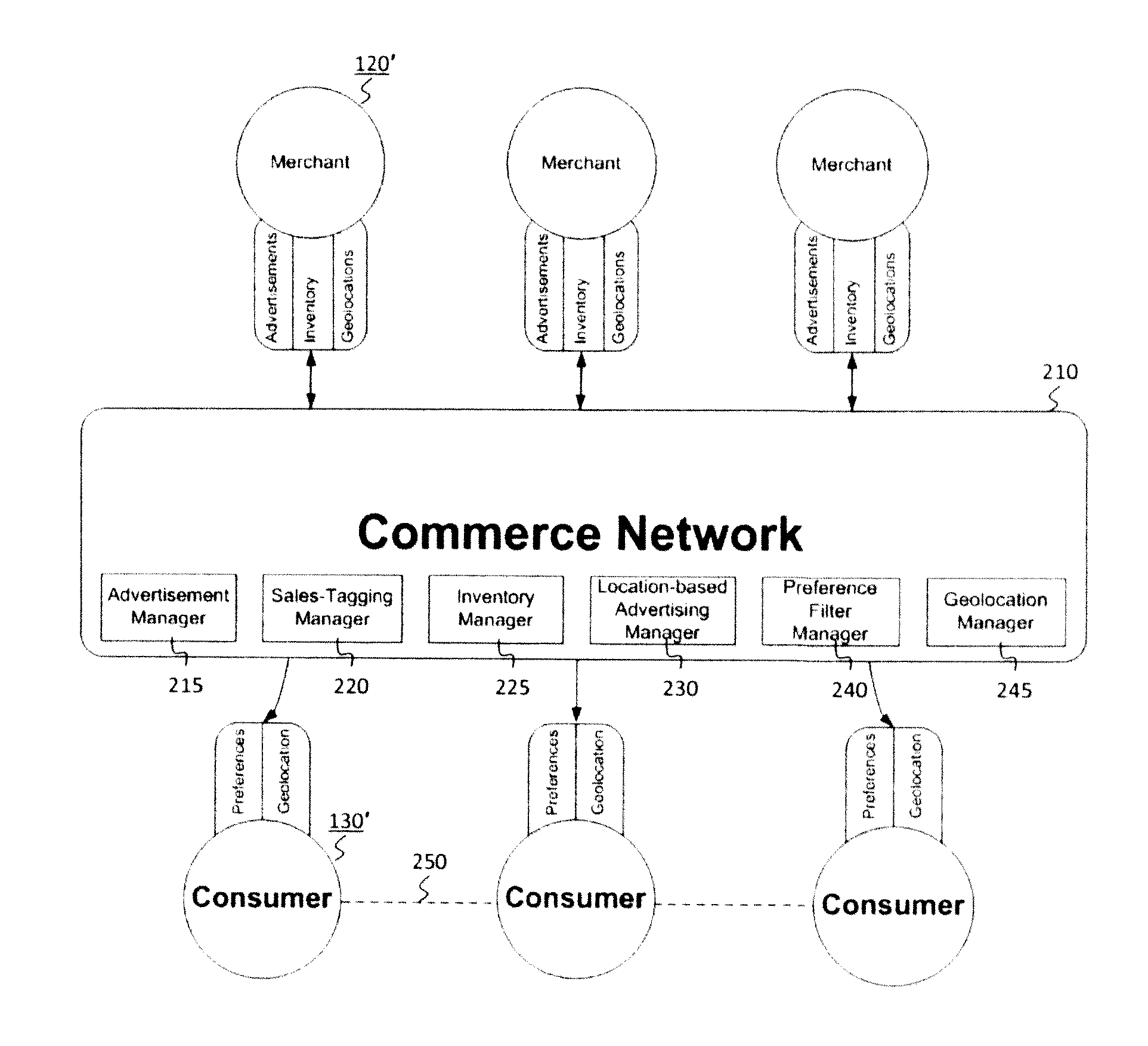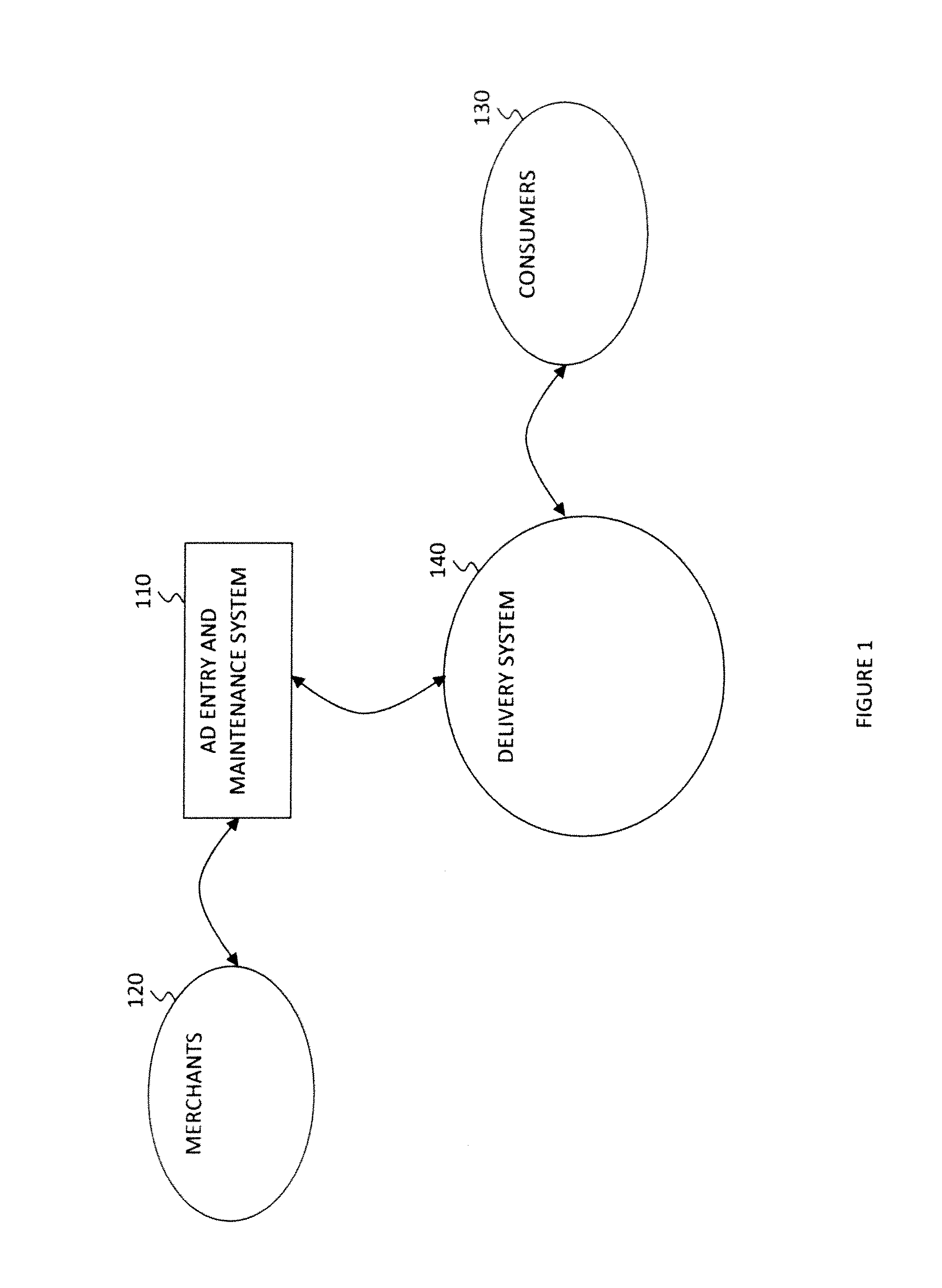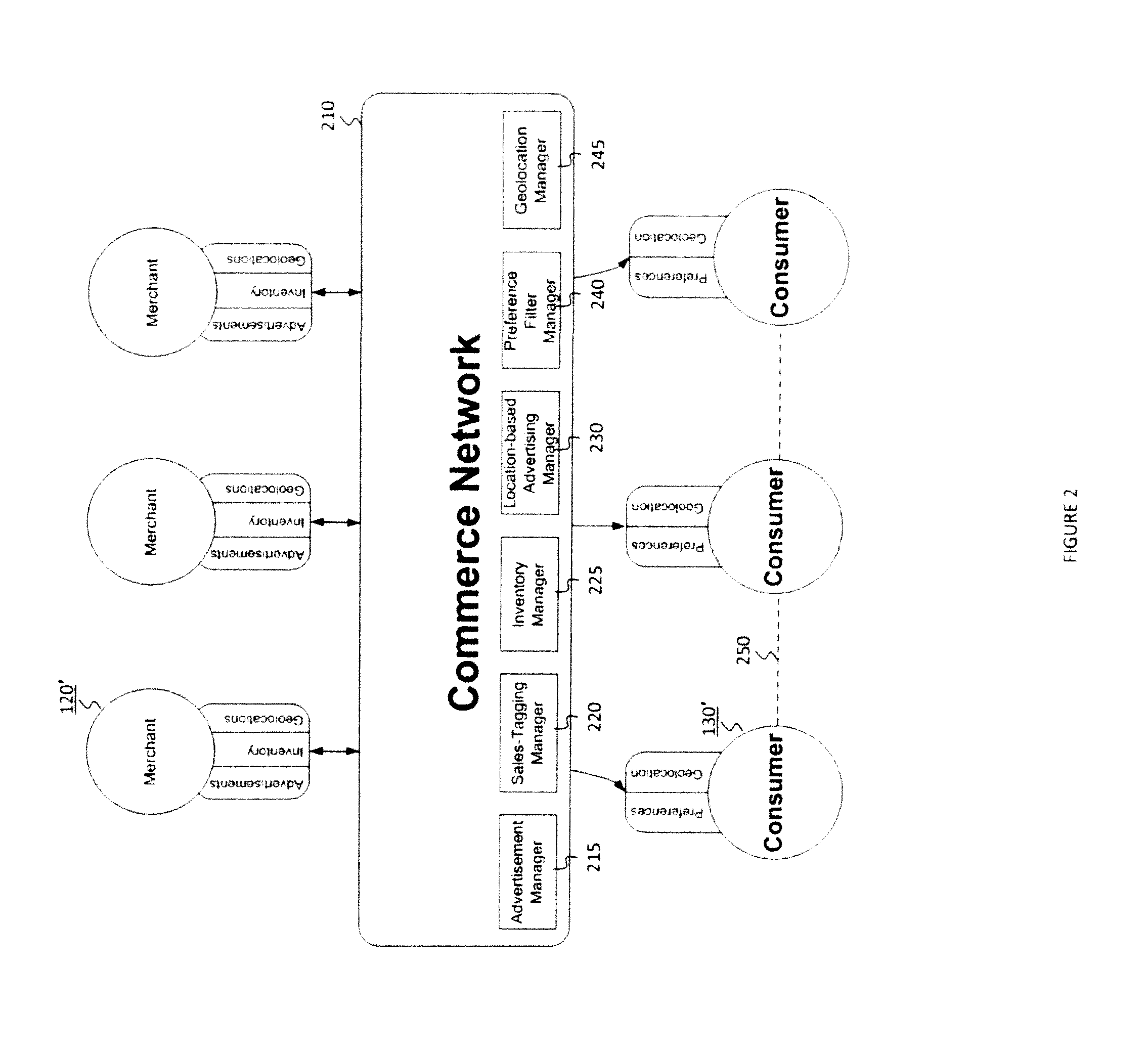Relevancy of advertising material through user-defined preference filters, location and permission information
a technology of location and permission information and relevance, applied in the field of advertising, can solve the problems of user overload in the information space, increase in the number of advertising mediums, and suffer the overload of user information space, so as to improve the relevancy of received advertisement information
- Summary
- Abstract
- Description
- Claims
- Application Information
AI Technical Summary
Benefits of technology
Problems solved by technology
Method used
Image
Examples
second embodiment
[0200]“Geolocation targeting information” (or “region”) may include location information to determine one or more operating areas associated with a request. In one embodiment, geolocation targeting information may include distance threshold information by defining a range extending outwards in all directions from a central point of interest (e.g. a merchant's geolocation) thereby defining a circular area as a valid operating region such as for the delivery of a location-based advertisement. In a second embodiment, it may include one or more regions defined by country, city / town / municipality / neighborhood / locality, zip / postal code, telephone area code, or specific ranges of latitude and longitude coordinates to add location information to a search or preference filter information. For example, a user may attach geolocation targeting information to a search to restrict search results to only downtown San Francisco, Calif., or their neighborhood Wellington Village, Ottawa.
[0201]“Invento...
third embodiment
[0246]A screenshot of a consumer screen for preference filter entry and modification 455′ according to one embodiment of the present invention is presented in FIG. 19. As discussed, the consumer has the option 1910 to attach the set preference filter to location-based advertisements, while they are also able to add merchants 1915 by selecting specific merchants and / or merchant locations and within selected regions, if desired. They are also able to add items 1920 of interest specified by one or more keywords, while they may also attach regions to limit the search. In another embodiment, consumers have the ability to use the commerce network to access advertisements available on the Internet only by including online-only promotions 1930. In a third embodiment, consumers may also attach one or more keywords related to products and / or services of interest to the merchant 1935 to seek specific products at particular merchants. Consumers can also add any number of preference filters at a...
PUM
 Login to View More
Login to View More Abstract
Description
Claims
Application Information
 Login to View More
Login to View More - R&D
- Intellectual Property
- Life Sciences
- Materials
- Tech Scout
- Unparalleled Data Quality
- Higher Quality Content
- 60% Fewer Hallucinations
Browse by: Latest US Patents, China's latest patents, Technical Efficacy Thesaurus, Application Domain, Technology Topic, Popular Technical Reports.
© 2025 PatSnap. All rights reserved.Legal|Privacy policy|Modern Slavery Act Transparency Statement|Sitemap|About US| Contact US: help@patsnap.com



